Jordan Wolfson’s transgressive art exposes the ugly parts of our nature
Through technologically sophisticated installations, Jordan Wolfson compels us to confront uncomfortable truths about human existence. He features as one of 25 creative leaders of the future in Wallpaper’s 25th Anniversary Issue ‘5x5’ project, nominated by fellow artist Michèle Lamy
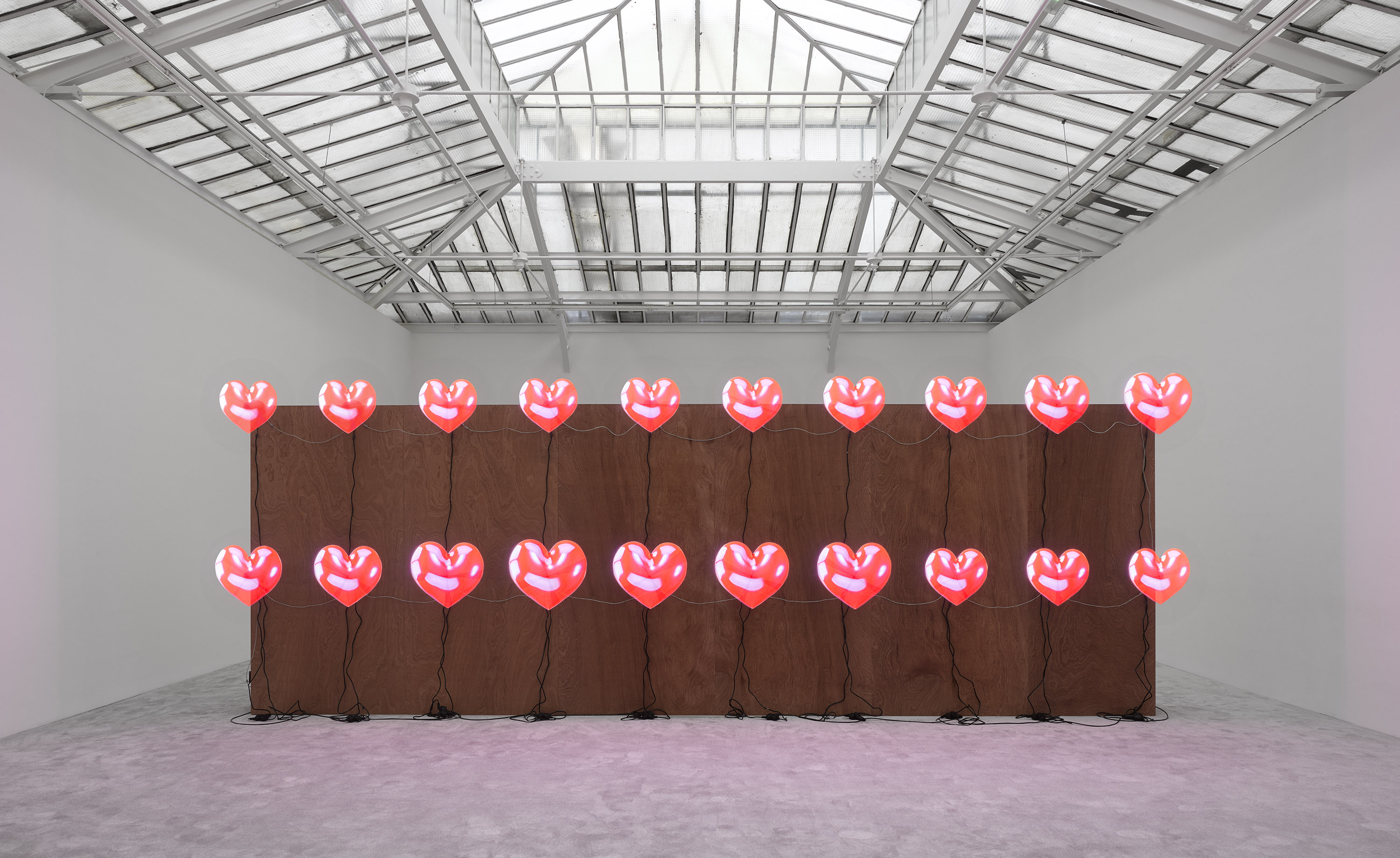
The art of Jordan Wolfson has been described as bizarre, transgressive, ‘borderline insane’. He shot to fame with Female Figure (2014), a robotic sculpture resembling a woman wears a revealing white dress and a witch mask, gyrating and giving monologues while using facial recognition software to return the viewer’s gaze.
Another animatronic piece, Colored Sculpture (2016), involved a child-like puppet with a demonic disposition, suspended from a gantry system with heavy chains. It’s flung around back and forth in the air and thrown against the floor in 15-minute cycles; all the while the classic love song When A Man Loves A Woman starts and halts in the background, interspersed with Wolfson’s voice reading a menacing text. The violent performance elicits shock and horror, followed by discombobulation and intense debate over its meaning. Some say it’s a comment on childhood trauma, some believe it’s an allegory for how violence begets violence, others suggest that the work reveals the illusory nature of civility and exposes the ugliest parts of our nature.
Top: Wolfson's Female Figure, 2014. Photography: Jonathan Smith. Above: Colored Sculpture, 2016. Photography: Dan Bradica. Both images courtesy of Jordan Wolfson, David Zwirner, New York, and Sadie Coles, HQ, London
Born in 1980, Wolfson belongs to a generation of artists who came of age with the internet. Online culture has certainly informed the irreverence, brutal honesty and even deprivation that permeates his work; it has also shaped his ambivalence towards technology. Despite his embrace of CGI animation, animatronics, holographic displays, virtual reality and the like, he is no techno-utopian; indeed, a 2017 VR piece Real Violence showed the artist beating a dummy into a (computer-generated) bloody pulp, challenging the viewer to bear witness while coming to terms with their inability to intervene.
When we ask the LA-based artist what technologies and associated social phenomenon he’s keen to explore next, he says, ‘I'm changing so my work is changing. Once you surrender to that, topical interests seem to blend into each other and don’t matter so much. But a big picture view I might ask, “How can consciousness be embedded into media?” And I don’t mean just robots that move. What I mean is how all art is the embedment of consciousness into media: painting, sculpture, literature, film, music, etc.’
Likewise, while Wolfson tends to avoid prescriptive readings of his artwork, he is confident in his broader intentions: ‘If art is supposed to be celebratory and propose a better world, for me that’s decorative art. That’s fine. But you’re looking at my work from another genre,’ he admitted in a 2020 interview. ‘I’m not here to heal the world. I’m an artist. My job is to see the world’.
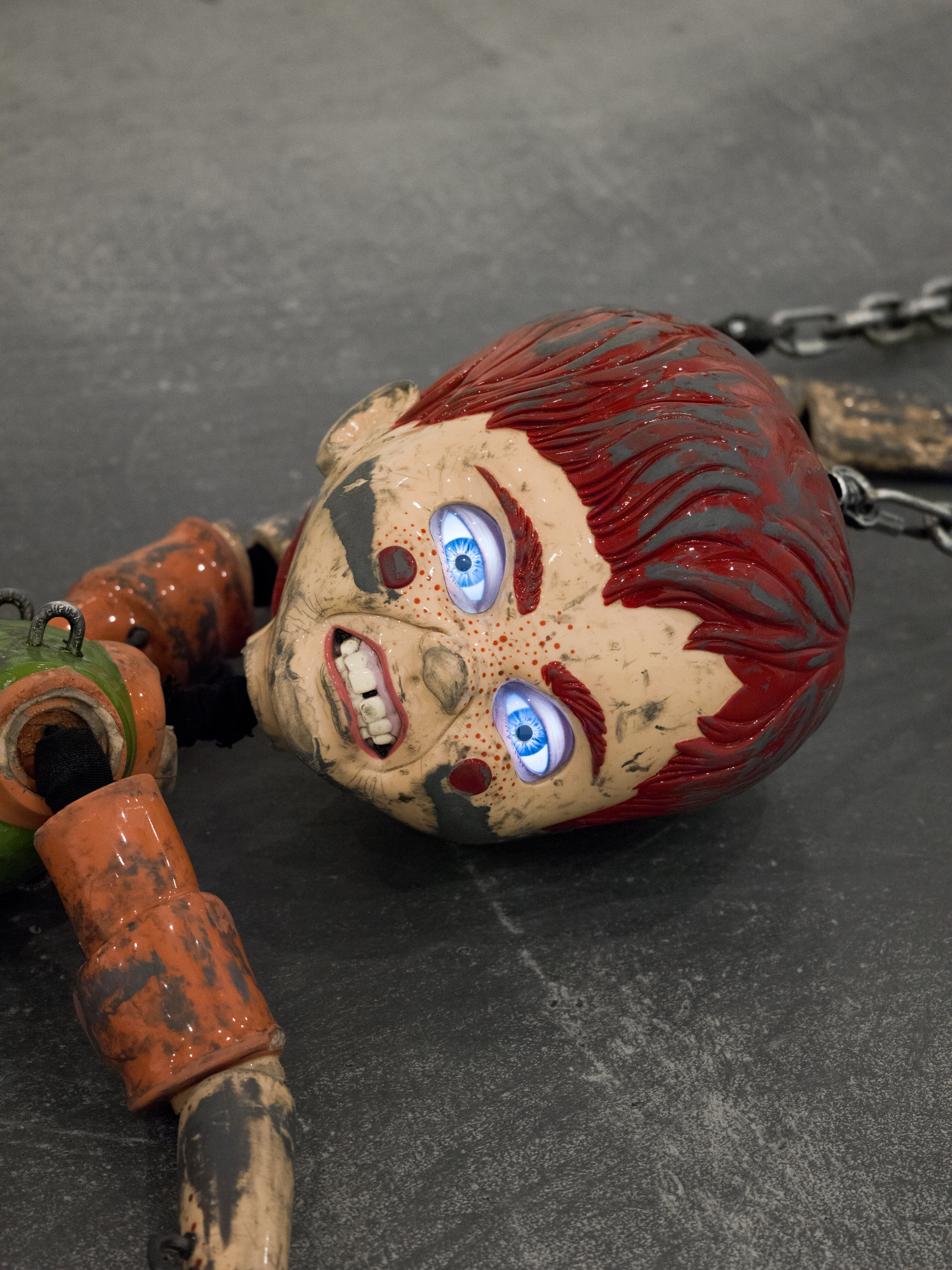
Detail of Wolfson's Colored Sculpture, 2016. Photography: Dan Bradica, courtesy of Jordan Wolfson, David Zwirner, New York, and Sadie Coles, HQ, London
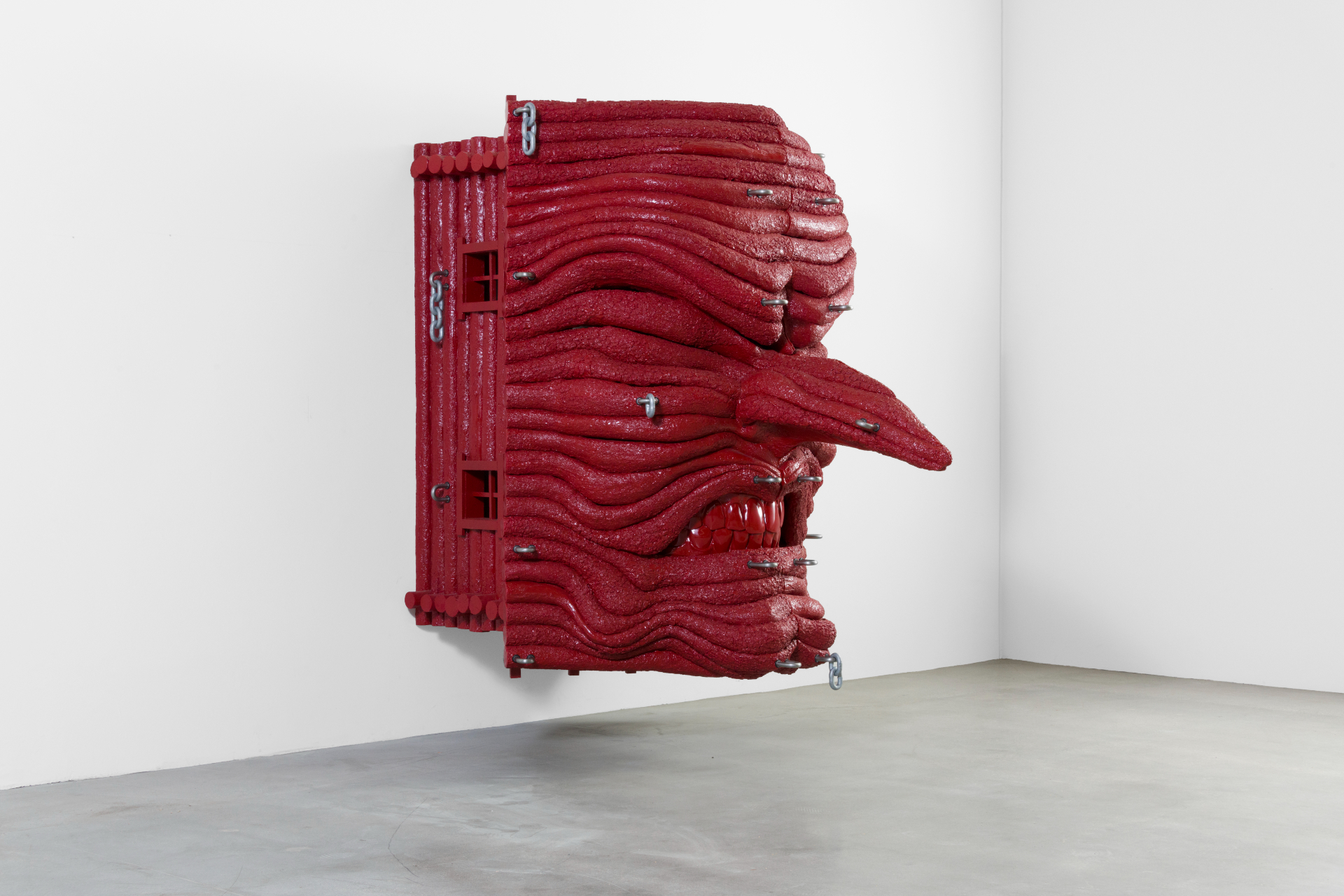
House with Face, 2017. Photography: Josh White, courtesy of Jordan Wolfson and Sadie Coles, HQ, London
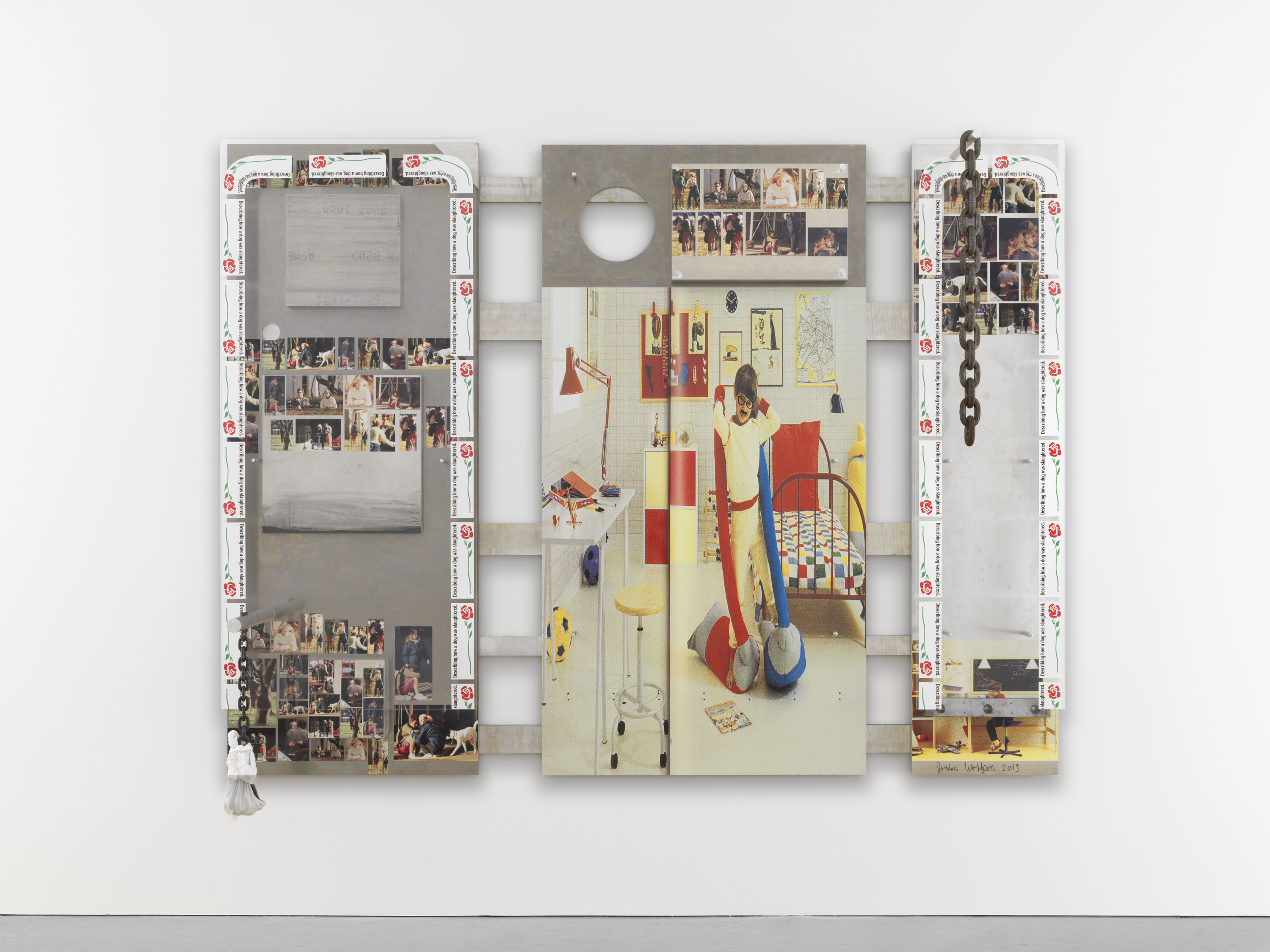
Untitled, 2019 (UV print with clear coat on aluminum panel, aluminum cleats, acrylic sheets, adhesive media, steel chain, cotton, tape, steel spacers, steel bolts, and paint marker). Courtesy of Jordan Wolfson and David Zwirner, New York
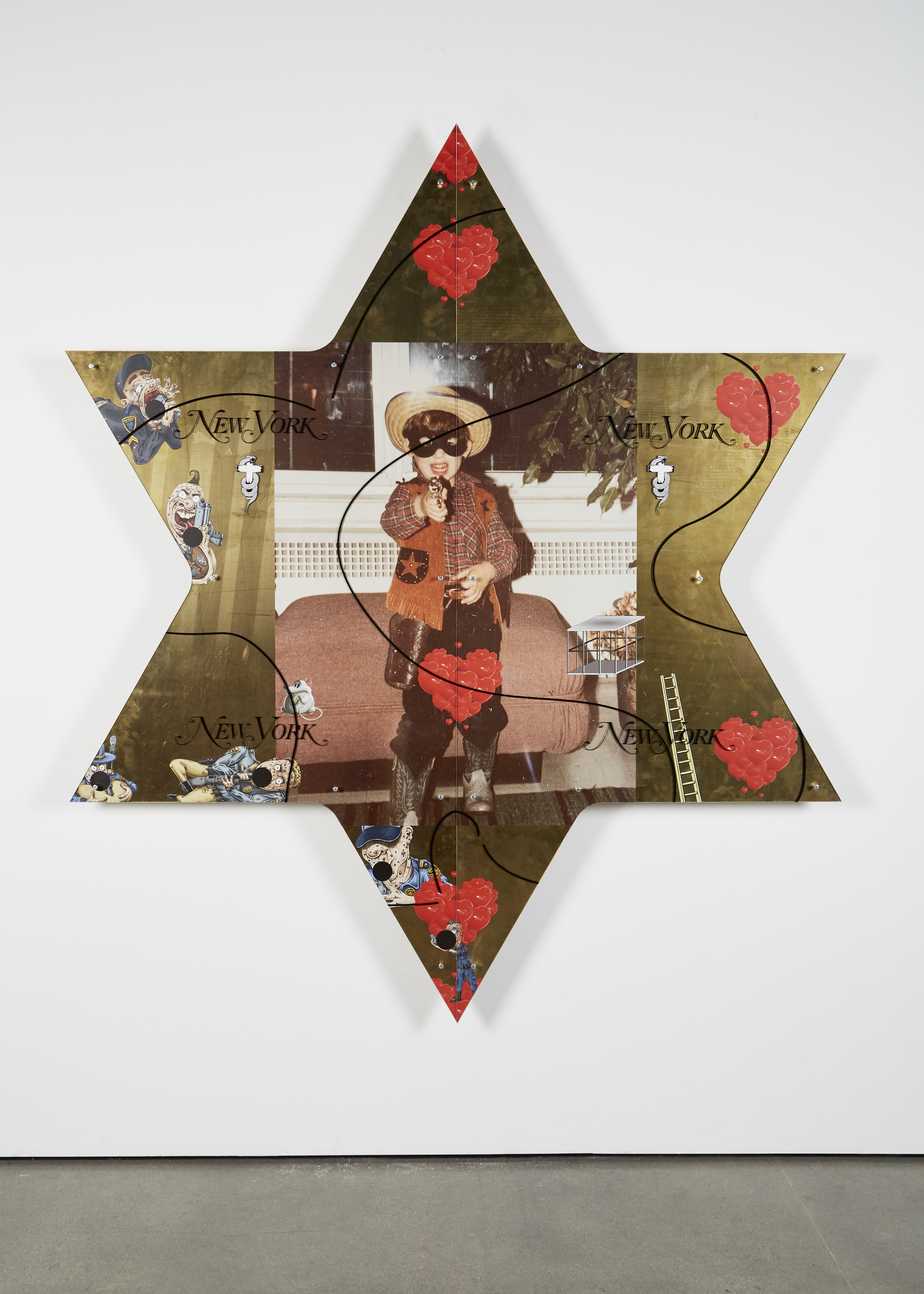
Untitled, 2020 (Brass, UV print, acrylic, adhesive vinyl stickers). Courtesy of Jordan Wolfson and David Zwirner, New York
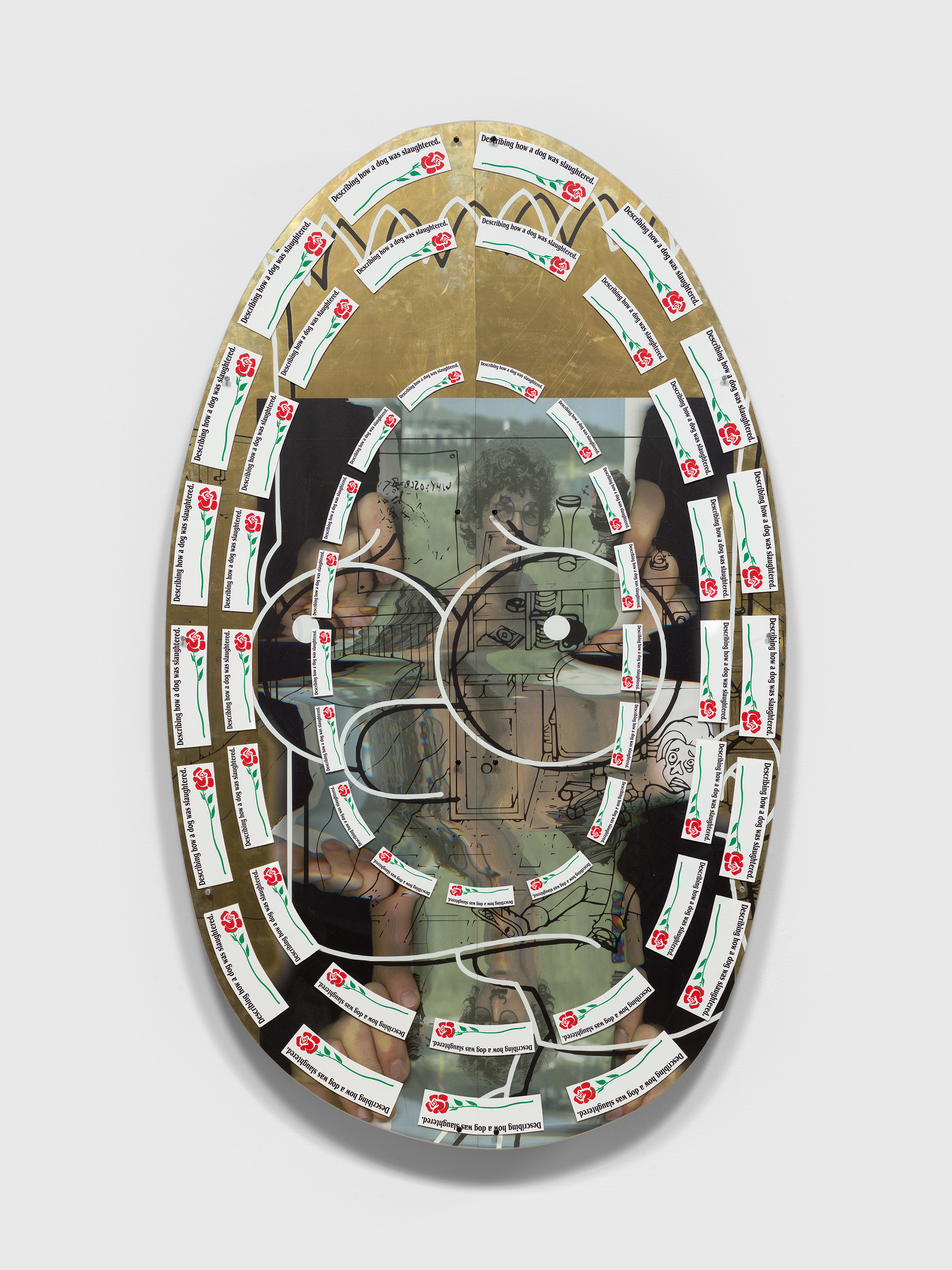
Untitled, 2021 (UV print on brass, acrylic, adhesive vinyl stickers). The stickers bear the words 'Describing how a dog was slaughtered'. Courtesy of Jordan Wolfson and David Zwirner, New York
Receive our daily digest of inspiration, escapism and design stories from around the world direct to your inbox.
TF Chan is a former editor of Wallpaper* (2020-23), where he was responsible for the monthly print magazine, planning, commissioning, editing and writing long-lead content across all pillars. He also played a leading role in multi-channel editorial franchises, such as Wallpaper’s annual Design Awards, Guest Editor takeovers and Next Generation series. He aims to create world-class, visually-driven content while championing diversity, international representation and social impact. TF joined Wallpaper* as an intern in January 2013, and served as its commissioning editor from 2017-20, winning a 30 under 30 New Talent Award from the Professional Publishers’ Association. Born and raised in Hong Kong, he holds an undergraduate degree in history from Princeton University.
-
 Art and culture editor Hannah Silver's top ten interviews of 2025
Art and culture editor Hannah Silver's top ten interviews of 2025Glitching, coding and painting: 2025 has been a bumper year for art and culture. Here, Art and culture editor Hannah Silver selects her favourite moments
-
 In Norway, remoteness becomes the new luxury
In Norway, remoteness becomes the new luxuryAcross islands and fjords, a new wave of design-led hideaways is elevating remoteness into a refined, elemental form of luxury
-
 The rising style stars of 2026: Oscar Ouyang is taking knitwear into new realms
The rising style stars of 2026: Oscar Ouyang is taking knitwear into new realmsAs part of the January 2026 Next Generation issue of Wallpaper*, we meet fashion’s next generation. Born in Beijing, Central Saint Martins graduate Oscar Ouyang is inspired by anime, medieval folklore and his friends’ wardrobes
-
 Nadia Lee Cohen distils a distant American memory into an unflinching new photo book
Nadia Lee Cohen distils a distant American memory into an unflinching new photo book‘Holy Ohio’ documents the British photographer and filmmaker’s personal journey as she reconnects with distant family and her earliest American memories
-
 Ed Ruscha’s foray into chocolate is sweet, smart and very American
Ed Ruscha’s foray into chocolate is sweet, smart and very AmericanArt and chocolate combine deliciously in ‘Made in California’, a project from the artist with andSons Chocolatiers
-
 Jamel Shabazz’s photographs are a love letter to Prospect Park
Jamel Shabazz’s photographs are a love letter to Prospect ParkIn a new book, ‘Prospect Park: Photographs of a Brooklyn Oasis, 1980 to 2025’, Jamel Shabazz discovers a warmer side of human nature
-
 The Hammer Museum in Los Angeles launches the seventh iteration of its highly anticipated artist biennial
The Hammer Museum in Los Angeles launches the seventh iteration of its highly anticipated artist biennialOne of the gallery's flagship exhibitions, Made in LA showcases the breadth and depth of the city's contemporary art scene
-
 Thomas Prior’s photography captures the uncanny fragility of American life
Thomas Prior’s photography captures the uncanny fragility of American lifeA new book unites two decades of the photographer’s piercing, uneasy work
-
 Central Park’s revitalised Delacorte Theater gears up for a new future
Central Park’s revitalised Delacorte Theater gears up for a new futureEnnead Architects helmed an ambitious renovation process that has given the New York City cultural landmark a vibrant and more accessible future
-
 Stephen Prina borrows from pop, classical and modern music: now MoMA pays tribute to his performance work
Stephen Prina borrows from pop, classical and modern music: now MoMA pays tribute to his performance work‘Stephen Prina: A Lick and a Promise’ recalls the artist, musician, and composer’s performances, and is presented throughout MoMA. Prina tells us more
-
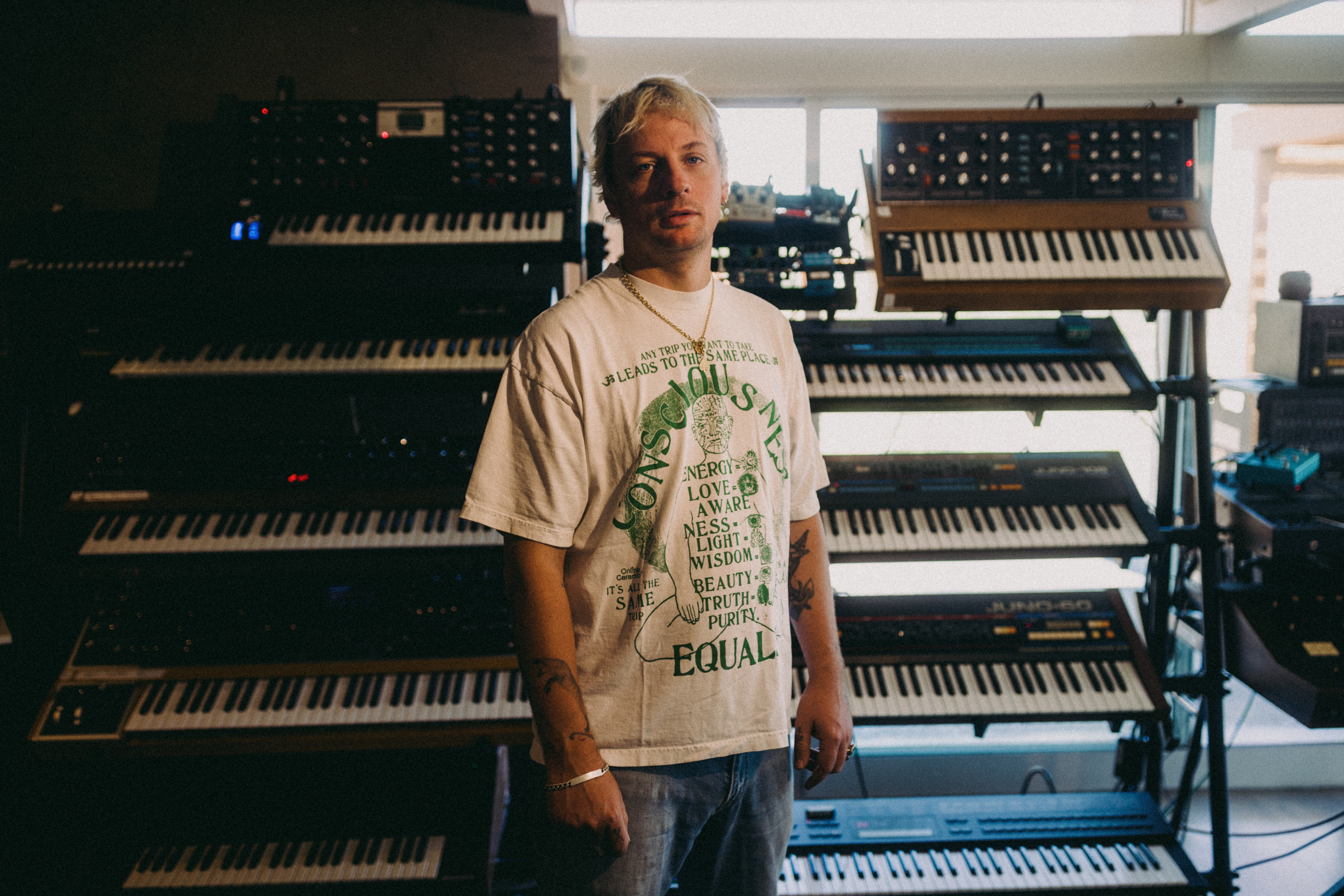 Curtains up, Kid Harpoon rethinks the sound of Broadway production ‘Art’
Curtains up, Kid Harpoon rethinks the sound of Broadway production ‘Art’He’s crafted hits with Harry Styles and Miley Cyrus; now songwriter and producer Kid Harpoon (aka Tom Hull) tells us about composing the music for the new, all-star Broadway revival of Yasmina Reza’s play ‘Art’